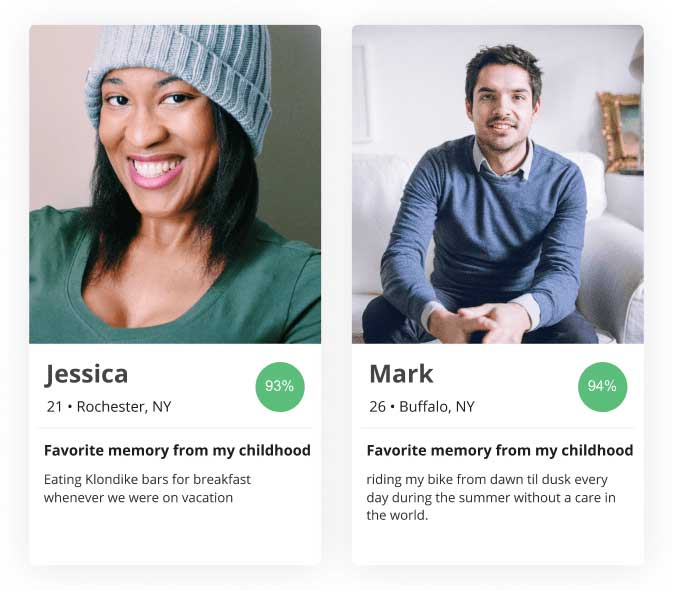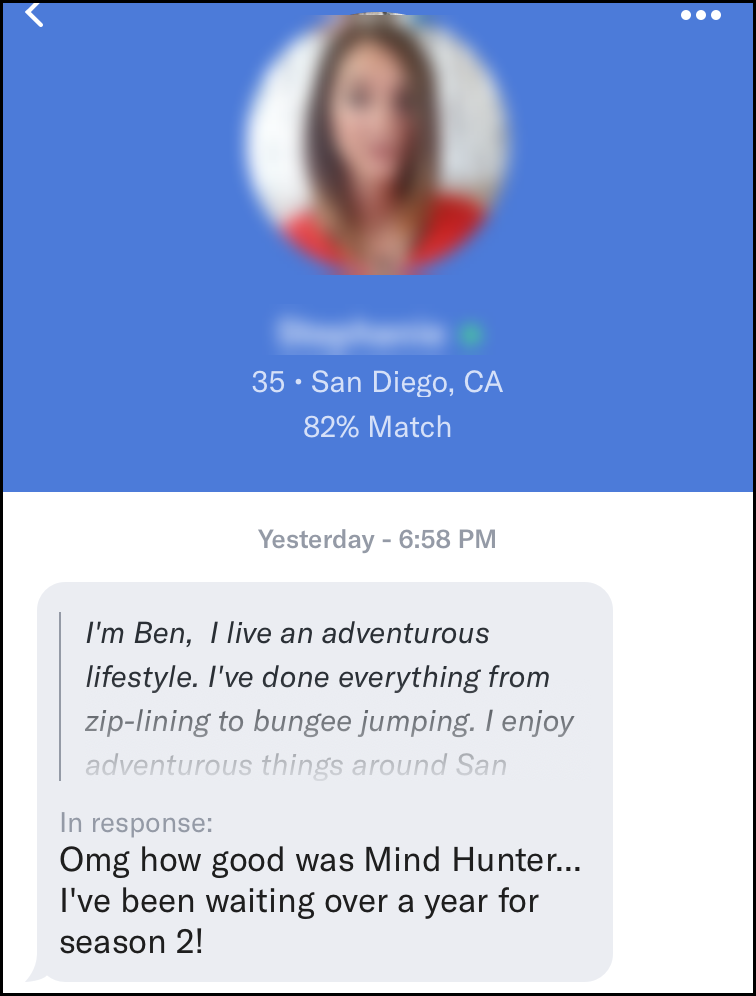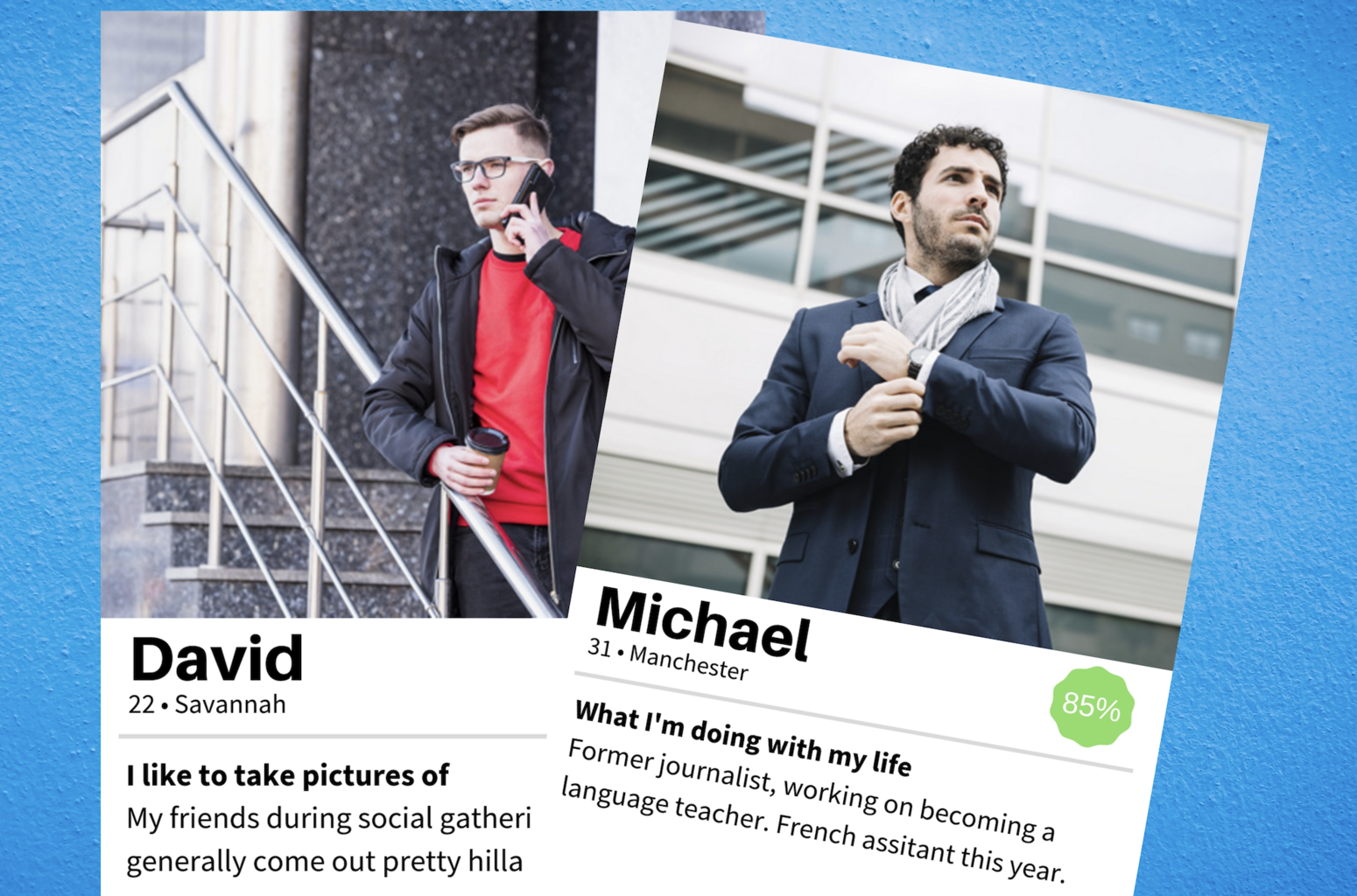Best Okcupid Profile For Guys
Avoid generalizations. In the pictured dating profile examples for men, it’s easy to see why. What Are The Best Online Dating Profile Tips For MenSome of the best online dating pr Read More What Is A Good Dating Profile Example For Men How I Revised A Guy's Dating Profile On OkCupid - And Made It Better!Are women ignori Read More. OKCupid Profile Trick Online Program To Get More Dates & Girls https://www.premiumlife.tv/en/girls/OKC. Here at OkCupid we’re all about substance over selfie. But that doesn’t mean your selfie can’t have substance. We want to help you make your profile picture as interesting and engaging as the rest of your profile. In this article we’ll aggregate 11.4 million opinions on what makes a great photo.
- Okcupid Profile Examples For Women
- Search Okcupid Profiles Without Account
- Best Okcupid Profile For Guys
Looking for the best OkCupid profile examples you can use to get more likes?
We’ve put together OkCupid profile “About Me” examples for each of the 6 prompts OkCupid lets you choose from.
Try these ideas out and see which one is the best fit for your OkCupid profile!
Okcupid Profile Examples For Women
OkCupid Profile “About Me” #1: My Self-summary
OkCupid’s first and most popular “About me” prompt is “My self-summary”. This OkCupid profile option is so general that it can feel daunting to come up with an original and interesting way to summarize yourself.
Sep 06, 2018 These types of OkCupid profile examples for men are for hobbies, interests, and hidden talents. Whether you can do a mean Larry David impression or like to spend the weekends taking woodshop, this approach let’s you talk about what you like to do for fun. Answers can range from goofy to passionate, but should all show off your personality.
Our favorite go-to is to list three favorite things — foods, hobbies, movies — whatever you’re passionate about.
Limiting your list to three keeps your summary succinct and makes people interested in learning more about you instead of thinking they already have you figured out.
Examples
Jocelyn, 28
My self-summary
Bad horror movies, sour beer, running in Riverside Park
Peter, 30
My self-summary
Matcha addict, Minecraft architect, Michael Bay film critic
OkCupid Profile “About Me” #2: Favorite Thing
Unless you’re traveling, most people seeing your OkCupid profile probably live in the same area as you. So answering the “favorite thing about the place I live” prompt with something very general about your city, like “sunshine, mountains, the people” isn’t all that compelling.
OkCupid profiles that offer a very specific interesting fact or anecdote are much more likely to get a doubletake.
Examples
Renee, 24
Favorite thing about the place I live
I can get CBD tinctures for myself and my dog from at least 3 places on my block.
Stephen, 26
Favorite thing about the place I live
We have arguably the best Indian food in the state, nay, the west.
OkCupid Profile “About Me” #3: People Who Know Me…
Think of your OkCupid profile as your dating resume. Your relationship prospects don’t need to see a list of qualities you think you are (funny, warm, team player). Instead, let your personality speak for itself when you share things your friends would say about you.
We like this most likely/least likely template for answering the “most people that know me would say I’m…” prompt.
Examples
Lee, 23
Most people that know me would say I’m
most likely to find reasons to order takeout, least likely to cook
Casey, 22
Most people that know me would say I’m
Most likely to initiate game night, least likely to go to a football game
OkCupid Profile “About Me” #4: Favorite Childhood Memory
We’ve noticed most people tend to stick to the default “my self-summary” OkCupid profile prompt, so you’re more likely to stand out from the pack just by choosing the lesser-known “favorite memory from my childhood”.
Sharing a funny or wholesome memory strikes the perfect chord of intimate without being creepy, and will make people want to swipe right to learn more.
Examples
Jessica, 21
Favorite memory from my childhood
Eating Klondike bars for breakfast whenever we were on vacation
Mark, 26
Favorite memory from my childhood
Riding my bike from dawn til dusk every day during the summer without a care in the world.
OkCupid Profile “About Me” #5: Things I am not
Using emojis for the OkCupid profile prompt “Things I am not” is the perfect chance to reveal your sassy side.
Emojis can be interpreted in many different ways, so describing yourself with them in your OkCupid profile will lead to follow-up questions in your chat.

Examples
Gwen, 23
Things I am not
🎨, 🔮, 🍸, 💩
Richard, 28
Things I am not
👽, 💀, 🏄, ☕
OkCupid Profile “About Me” #6: Haiku
Picking “Me, a Haiku” as your OkCupid profile prompt is bold, bound to impress, and easier than you think!
Just decide what 3 attributes or hobbies you’d most want to include in your profile and play around with them to fit the 5/7/5 syllable format.
Examples


Kennedy, 29
Me, a Haiku
Yoga instructor.
Animal rights activist.
Macrame dabbler.

Jason, 33
Me, a Haiku
Game of Thrones critic.
Sky diving is my passion.
Caffeine fuels my life.

NOTE: Even the most 🔥🔥🔥 OkCupid profile can’t make up for bad pics…
If your pics are blah, it’s game over.
People only even read a person’s OkCupid profile after already liking their pics.
The best solution out there: test your pics on Photofeeler.
Photofeeler tells you exactly how your OkCupid photos are coming across to women or men.
Go to Photofeeler.com now and give it a try!
TL;DR: OKCupid’s study on male dating photos fails reproducibility
If you’re a guy who uses online dating sites/apps, you’ve probably heard this one: don’t smile in your picture. Better yet, don’t smile and look away from the camera.
This tip originated on the OkCupid’s OkTrends blog in January 2010. The post was called The 4 Big Myths of Profile Pictures.
Growing skepticism
Since OkCupid published their data in support of not smiling in pics, the tip has been quoted as gospel truth on dating advice blogs, PUA podcasts, dozens of dating subreddits, forums, everywhere.
But, at the same time, widespread skepticism rose too. One Reddit commenter put it this way:
“Despite what OkCupid may say, I believe that in Tinder’s last roundup of the top 100 male profiles, basically all of them were smiling in their lead picture.”
Further — everywhere men floated the “don’t smile in pictures” advice, many women decried how much they hated these nonsmiling pictures. But, the men countered, women don’t necessarily know what they want. After all, OkCupid’s findings were based on behavior, not just talk, right?
Photofeeler steps in
This is where we at Photofeeler come in. Like everyone else, we believed in OkCupid’s conclusions. But the more data we collected about men’s dating photo attractiveness, the more it became undeniable: OkCupid’s advice wasn’t raising men’s photo scores.
At first, this realization was frustrating. We even worried our tool could be flawed. But every time we looked into this, we found the same thing: daters who used Photofeeler for photo testing were getting right-swipes like never before. In fact, users reported 3-5x (200-400%) more matches! So the opinions on our site were translating directly into behavior.
We decided it was time for someone to challenge the OkCupid study.
Using the massive stores of data on our platform, we set out to reproduce OkCupid’s process (as laid out by the Myths of Profile Pictures post). We narrowed the demographics of our data set accordingly, matching their 7,140-photo sample. Then we ran each picture through a variety of analysis scripts (in our case, neural nets that detected smiles and eye contact) as well as tagged each one by hand until total agreement was reached. Finally, we used Photofeeler attractiveness ratings to gauge the success of the various photo types (smiling, not smiling, eye contact, no eye contact).
What We Found (Results/Findings)
Here is OkCupid’s study results vs. our own:
OkCupid’s data said that not smiling and not making eye contact was better.
Ours says that whether you smile or not makes no statistically-significant difference (except in the case of eye contact and no smile, which is harmful).
Here are some possible reasons behind the differing results.
I. Evidence suggests OkCupid manipulated their data set to get a click-worthy result
Let’s be real here: research can be a racket. Back in 2010, no one would publish “smiling works great in dating photos!!1” because most people assumed that already. Affirming what people already know is boring. A counter-intuitive result (e.g. “smiles are actually unattractive!”) was far more sensational.
Most people think data ought to speak for itself. But data can be manipulated. To put it frankly, data can be manipulated to show practically any result that the scientist would like it to. And in OkCupid’s case, it’s reasonable to assume that they got the interesting result they wanted, in part, by cutting out particular populations from their data set.
OkCupid used a sample of 7,140 photographs from users aged 18-32, in big cities, possessing average attractiveness (that is, they lopped off the top and bottom 20%), and who had profiles containing only one photo and no text. Then “after a bit more sifting” (!), they landed on their study’s data set.
Why did OkCupid eliminate users outside of the ages of 18 and 32? Why did they eliminate users who were most and least attractive? The explanation given (that they “[feared it] would skew [their] results”) is no explanation at all. They didn’t have to “fear” anything because, in all likelihood, they first ran their numbers with these populations included. They just didn’t get as interesting of a result that way.
The over-sifting of the data set likely obscured other trends that were more responsible for profile success than the photo characteristics the study claimed to be measuring. For instance, it’s possible that the men in the top 20% of attractiveness were attractive and smiling, and the men in the bottom 20% of attractiveness were unattractive and not smiling. This leaves only smiling ugly guys at the bottom of the spectrum and grumpy hot guys at the top, making it look like being grumpy makes you hot.
II. OkCupid had far too little data to draw conclusions
Building on the previous point, there’s the question of how many pictures of men not smiling and not making eye contact were in the data set to begin with.
Giving OkCupid the benefit of the doubt, let’s say their sample was 50/50 male and female (even though it would likelier have skewed female). 7,140 photos is only about 3,570 per gender.
This is a good sample if you’re measuring a condition that will be present in all of the photos. But the number of men who were not smiling and looking away (especially in early 2010, before OkCupid advised it) would be in the hundreds at most. Even today, less than 15% of photos have no eye contact. Before OkCupid declared it superior, it was likely 5-10% (200-300 photos split into 3 groups: smiling/not/flirty).
We know for certain that OkCupid knowingly made claims based on too little data because they had approximately 7 photos of male “flirty face” with no eye contact and they still drew conclusions about its effectiveness.
Not to mention, the metric they were using to gauge a male dater’s profile effectiveness (“women met per attempt”) is a wildly varying and unbounded metric; one guy with a particularly interesting photo that gets one unsolicited message per day could have easily made their whole result.
III. OkCupid had a biased population sample
Trends change. In data science, we know it can be difficult to find consistent trends even between visitors of the same website from one week to the next.
Is it likely that trends found among a very specific niche of male daters long ago — those who chose to upload only one photo and no profile text to OkCupid in 2009 — could translate to a viable Tinder strategy for all men in 2017?
The truth is that societal and dating norms have changed a lot in this amount of time. For instance, dating online used to be taboo. So perhaps giving an air of “I’m too good for this” with a non-smiling, looking away photo and no profile text appealed slightly more to women at the time.
Further, what kind of man uploads one photo and no profile text? Perhaps it’s this personality type (not the photo’s characteristics out of context) that speak to which photo strategies worked best for him.
IV. The OkCupid study itself spawned a new class of bad photos
Finally, let’s chat for a moment about what happens when a highly popular dating site disseminates misinformation about what works best in guy’s dating pics: a new class of male dating photos is born.
We hypothesize that the publicity of OkCupid’s results gave rise to a new type of dating photo within which the subject is purposefully avoiding smiling and eye contact, in which the subject seems to be awkwardly looking in another direction for no apparent reason. Internally, we labeled these photos as “avoidant” because they tend to come across to strangers as if the subject is too timid to make eye contact.
Fact is, these avoidant photos just didn’t exist before the 2010 OkCupid study. Before this advice was made popular by OkCupid, the only instances of not smiling and not making eye contact were at least somewhat contextually relevant. After: not so much.
Conclusions
OKCupid’s study on male dating photos did not pass the reproducibility test in 2017.
Our data suggests that there is no one-size-fits-all photo strategy for all men. Rather, it’s important to determine what’s appropriate and natural in context, and to consider what characteristics you individually have to offer a mate.
Truthfully, even if a particular photo strategy showed a slight difference in average effectiveness, the individual photos score all over the map.
Search Okcupid Profiles Without Account
That’s because certain strategies may work better for certain people or in certain contexts. If you want to know what works: try it, test it.
Best Okcupid Profile For Guys
Photofeeler is a tool for testing profile pics, as seen in Time, Forbes, The Today Show, and more. Know for certain how you’re coming across in your dating pictures. It’s free to use here.